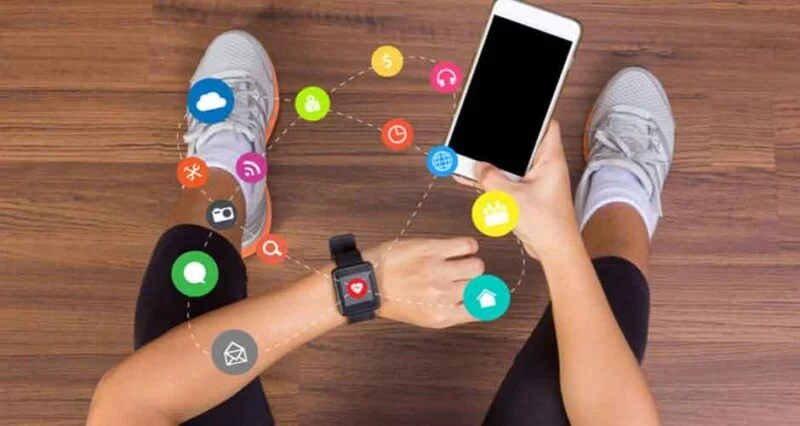
Wearable technology has rapidly emerged as a groundbreaking trend, seamlessly integrating into our daily lives and revolutionizing how we engage with technology. With various options, including smartwatches, fitness trackers, virtual reality headsets, and bright clothing, wearables have diversified into multiple forms, presenting many benefits across different facets of life.
Wearable technology refers to devices that are worn on the body, and they are typically equipped with sensors, connectivity features, and interactive capabilities. These innovative devices can monitor various aspects of our health and fitness, deliver real-time notifications, facilitate communication, and even enrich our reality by providing immersive experiences. Engage with Managed IT Services Vermont experts to leverage the power of wearable technology in your business.
In this article, we will explore what is wearable technology for business, wearable technology types and wearable technology benefits.
What is Wearable Technology For Business?
Wearable technology refers to electronic devices worn on the body, typically as accessories or clothing. These devices have sensors and advanced technologies that allow them to collect data and perform various functions. Common examples of wearable technology include smartwatches, fitness trackers, virtual reality headsets, and smart glasses.
These devices can track health and fitness metrics, provide notifications and alerts, offer immersive gaming experiences, and even enable hands-free communication. Wearable technology has gained popularity recently due to its ability to seamlessly integrate into daily life and enhance the user experience in various applications.
4 Types Of Wearable Technology
-
Fitness tracker
A fitness tracker is a wearable technology designed to monitor and track various aspects of an individual’s physical activity and health. These devices are typically worn on the wrist and can track the steps taken, distance traveled, calories burned, heart rate, and sleep patterns.
Fitness trackers often sync with smartphone apps or computer software, allowing users to view and analyze their data efficiently. They can be helpful for individuals looking to improve their fitness levels or track progress toward specific health goals. With technological advancements, many fitness trackers now include GPS tracking, heart rate monitoring, and even guided workouts.
-
Smartwatches
Smartwatches are a popular type of wearable technology offering various features and functionalities. These devices typically resemble traditional wristwatches but come equipped with advanced capabilities such as fitness tracking, notifications, and even the ability to make phone calls. Smartwatches often sync with smartphones, allowing users to access apps, receive messages, and control various functions directly from their wrists.
They can also track heart rate, steps taken, and sleep patterns, making them valuable tools for monitoring and improving their health and wellness. With their sleek designs and convenient features, smartwatches have become a must-have accessory for tech-savvy individuals seeking a blend of style and functionality.
-
Health Monitoring Devices
Health monitoring devices are a popular wearable technology category that can provide valuable insights into an individual’s health and well-being. These devices typically track various biometric data, such as heart rate, sleep patterns, and activity levels. By monitoring these metrics, users can better understand their overall health and make informed decisions about their lifestyle choices.
Health monitoring devices can benefit individuals with chronic conditions or those looking to improve their fitness levels. With advancements in technology, these devices are becoming increasingly accurate and user-friendly, allowing individuals to take control of their health like never before.
-
Virtual Reality (VR) Headsets
Virtual Reality (VR) headsets are wearable technology that has recently gained popularity. These devices use advanced technology to create an immersive virtual reality experience for the user. VR headsets typically consist of a headset with built-in displays and sensors that track the user’s movements, allowing them to interact with virtual environments.
This technology has applications in various industries, including gaming, entertainment, education, and healthcare. VR headsets allow users to explore virtual worlds, play games, watch movies, and even participate in virtual training simulations. As technology advances, VR headsets are becoming more accessible and affordable, making them an exciting option for tech enthusiasts and avid gamers alike.
4 Benefits Of Wearable Technology
-
Safety and Emergency Response
Wearable technology offers a range of benefits for businesses, particularly regarding safety and emergency response. With wearable devices, employees can access critical information and notifications instantly, allowing for quick and efficient communication in an emergency.
For example, in industries such as construction or manufacturing, where accidents and emergencies can occur, wearable devices can provide real-time alerts and notifications to ensure that employees are aware of any potential dangers or risks. Additionally, wearable technology can also track and monitor vital signs and physical activity, which can help identify potential health issues or injuries before they become serious.
-
Personalized Experiences
Wearable technology offers several benefits for businesses, including the ability to provide personalized experiences to customers. With wearable devices such as smartwatches and fitness trackers, companies can collect customer preferences, behaviors, and needs data. This data can tailor products, services, and marketing campaigns to individual customers, creating a more personalized and engaging experience.
For example, a retail business could use data from a customer’s wearable device to offer personalized recommendations or promotions based on their previous purchases or fitness goals. By leveraging wearable technology for customized experiences, businesses can enhance customer satisfaction and loyalty while gaining valuable insights into consumer behavior.
-
Improved Productivity
Wearable technology has the potential to improve productivity in the business world significantly. With features like activity tracking, smart notifications, and hands-free communication, wearable devices enable employees to stay connected and organized throughout the workday.
By streamlining tasks and eliminating the need for constant smartphone checking, wearable technology allows uninterrupted focus on meaningful projects and deadlines. Additionally, wearables can provide valuable insights into employee health and wellness, allowing businesses to implement wellness programs and initiatives that promote a healthy work environment. If you want to improve business productivity, contact the IT Consulting Vermont team.
-
Data Collection and Analysis
One of the key benefits of wearable technology for businesses is its ability to collect and analyze data. Wearable devices such as smartwatches, fitness trackers, and augmented reality glasses have sensors that can track and record metrics such as heart rate, sleep patterns, steps taken, and even location. This data can provide valuable insights into employee behavior and performance, customer preferences and behavior, and overall business operations.
By analyzing this data, businesses can make more informed decisions, improve productivity and efficiency, personalize customer experiences, and identify areas for improvement or optimization. However, companies must ensure that they collect and analyze this data responsibly and ethically while respecting privacy concerns and regulations.
Final Thoughts
Wearable technology epitomizes a dynamic fusion of innovation and convenience, fundamentally transforming how we engage with and comprehend technology in our everyday lives. From smartwatches to fitness trackers, these devices provide many advantages, including advanced health monitoring, heightened productivity, and effortless integration into our daily schedules. As this technology progresses, it offers the potential for even more significant advancements, shaping a future in which wearable devices become indispensable companions, enabling us to lead healthier, more interconnected lives.

